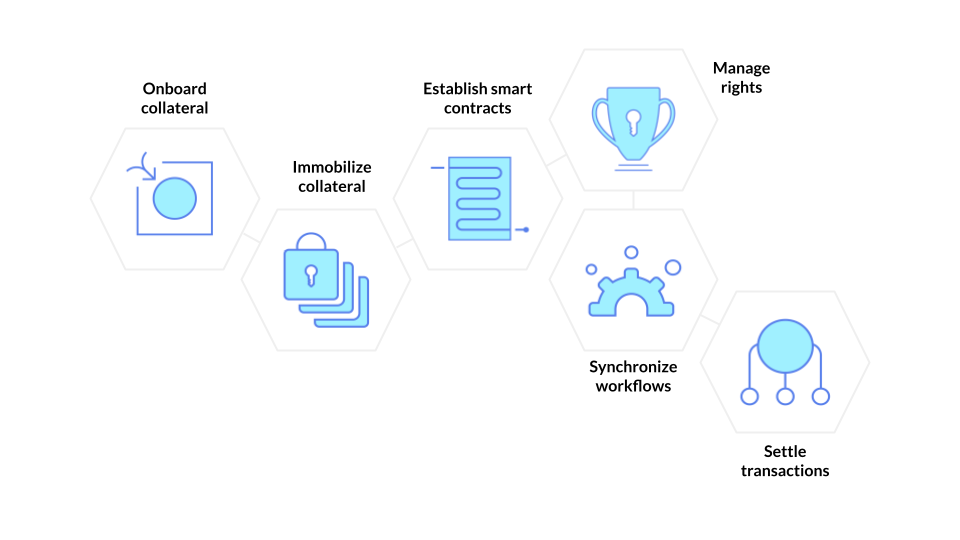Making the $10 trillion+ repo market safer and more efficient through the Broadridge Distributed Ledger Repo (DLR) solution
The challenge: Reduce the risk and cost of a systemically important market
The repo markets are the workhorse of finance, underpinning the smooth functioning of capital markets by providing essential financing and liquidity to global corporations and local municipalities. Repo transactions are open-ended, complex multi-party transactions with daily lifecycle events. Every participating institution has different needs, creating a wealth of functionality requirements across the different systems used to process and manage transactions.
Although markets are safer following financial reforms, repo remains full of operationally intensive, customized processes. Manual reconciliation and intervention result in significant operational overhead and capital utilization due to asynchronous cash and securities settlement. With no single source of truth for the lifecycle of the trade, fragmentation, fails, and disputes are common and costly. As an example, as of April 2023, treasury fails over the prior 12 months averaged approximately $40 billion per day and resulted in millions of dollars in daily penalties for market partIcipants.
“A fully automated end-to-end repo service supports the simultaneous settlement of cash and securities, removing risk from the process and significantly decreasing capital costs. Momentum and interest in the platform continue to grow.”
 Horacio Barakat,
Horacio Barakat,
Head of Digital Innovation, Capital Markets
The solution: Agree, execute, and settle repo transactions on a single ledger available to all participants
Broadridge processes repo transactions for 20 of the 24 primary dealers in the US. They tackled the challenge head on, creating Distributed Ledger Repo (DLR) and providing a single platform where market participants agree, execute and settle repo transactions.
Using a digital repo approach, collateral can be detached from the trade agreement while the cash remains off chain. The underlying securities in the repo transaction can be immobilized while ownership is transferred via smart contracts. Participants gain a synchronized, mutualized workflow with access to one real-time, always accurate source of data.

Easily integrated, scalable solution transforms a critical market
DLR uses distributed ledger technology to model the repo process and associated lifecycle events across sellers and buyers from repo creation to maturity. Using the Canton blockchain and Digital Asset's smart contract language, Daml:
- Market and processing rules are embedded, so every step can be validated, proved, observable and auditable.
- The legal terms of every agreement are encoded and preserved. Roles, rights, and obligations of all parties are clearly identified.
- Privacy and data segregation are built in and managed through deep integration.
- Settlement takes place simultaneously, improving mobility and removing risk. Secured parties remain secured.
While the first use cases focused on bilateral repos and intracompany transfers/collateral movement, DLR is agnostic to geography and type of security. It will ultimately support a wide array of transaction types across jurisdictions, including intraday, overnight, evergreen and term repos on a bilateral and intracompany basis, and is scalable to handle increasing volumes.

Widespread adoption creates a network effect that extends benefits more broadly throughout the repo ecosystem

New alpha and lower capital costs
Transaction execution costs dramatically decrease. More strategic collateral deployment lessens capital charges.
|

Substantially reduced risk
Workflows are synchronized and mutualized, with a single, real-time source of data available to all participants. Underlying securities can be immobilized with ownership transferred.
|

Enhanced efficiency
Manual processes and reconciliations are eliminated. Settlement timings and market delivery fails are reduced.
|

Designed for scale and easy adoption
Works with existing depositories, payment rails and participants’ underlying technology.
|
In 2023 Broadridge DLR successfully migrated from VMWare's blockchain to Canton and now processes all transactions via Canton infrastructure, and participates in the Canton Network.